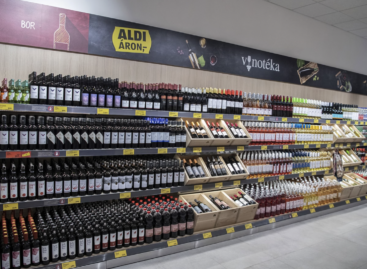Hungarian-owned retail chains: growing gap between Budapest and the rest of the country
This article is available for reading in Trade magazin 2023/6-7.

Andreas Christou
managing director
RetailZoom
Growing gap between Budapest and the country
Andreas Christou, managing director of RetailZoom gave a presentation on the market researcher day of Trade Marketing Club (TMK). He told: in the last 15 months sales by Hungarian retailers jumped 18.3% in value, but the number of transactions didn’t grow in the 4,100 shops audited by RetailZoom. In 2021-2022 the prices of the approximately 20,000 SKUs sold by these stores on a permanent basis increased by 54%. Meanwhile the gap between Budapest and the country became much bigger, as the absolute value of the price increase affected the rest of the country much more than the capital city. In Budapest the proportion of large basket shoppers was 15.6% as opposed to the 6.4% in the country. Plus in Budapest the average large basket value was HUF 29,100 vs. HUF 13,650 in the country; what is more, this difference continues to grow.
Shopping goals: the emphasis isn’t where it used to be
Shopping habits change and together with these shopping goals also transform to a certain extent: top-up mission and convenience shopping are gaining ground, which signals that the growth has been the biggest in the case of shopping baskets with 4-11 items in them. Sales of private label products augmented by 61% in Hungarian retail chains if compared with 2021. The proportion of these products grew from 9% to 14% in the audited stores. Typically the portfolio of Hungarian-owned retail chains is around 50,000-60,000 SKUs. This isn’t ideal from a profitability perspective, as 19-20% of products generate 90% of sales. Although prices increased by 54% in 2022, in the last three months the prices of 19,700 SKUs only elevated by 7.4%.
Loyal shoppers shop more often and purchase more
Data from the 160,000 loyalty cards analysed by RetailZoom reveal that loyal shoppers shop 17% more often, and the number of products they put in their baskets is 21% bigger. In Hungarian retail chains every tenth customer is a “premium” shopper, and they have a 33% share in total sales. As for “mainstream” baskets, there has been a big drop: their share used to be more than 35%, from which some ended up in premium and “economy” baskets. In Hungary every third basket belongs to the economy category, and these have a 10-11% share in sales. 35% of loyalty card holders have switched to cheaper products. This trend had the smallest influence on premium baskets (4.2%). Mainstream baskets suffered the biggest blow, typically these were replaced with “value for money” or economy baskets.
RetailZoom believes that the next 2-3 years will be about reaching and keeping shoppers, and about finding ways to offer them better enough prices, so that they buy as many products in the shops of the given chain as possible. This also means that price-sensitivity is going to be one of the most discussed topics in 2023, with loyalty card and strengthening customer loyalty becoming more important. //
Related news
Hungarian Innovation Association: around 500 applications received for the 35th National Science and Innovation Olympiad
🎧 Hallgasd a cikket: Lejátszás Szünet Folytatás Leállítás Nyelv: Auto…
Read more >These are the most beautiful brick buildings in the world – A tomb, a museum and a liquor factory are also competing in the BRICK AWARD 26 finals
🎧 Hallgasd a cikket: Lejátszás Szünet Folytatás Leállítás Nyelv: Auto…
Read more >Price isn’t enough, promotions and re(in)novation are lifting the plane
🎧 Hallgasd a cikket: Lejátszás Szünet Folytatás Leállítás Nyelv: Auto…
Read more >Related news
Bread and wine for 399 forints, mulled wine for 450 forints: ALDI opens its own downtown Christmas market
🎧 Hallgasd a cikket: Lejátszás Szünet Folytatás Leállítás Nyelv: Auto…
Read more >MBH Analysis Center: Hungarian tourism is soaring – further growth is expected in the hotel market
🎧 Hallgasd a cikket: Lejátszás Szünet Folytatás Leállítás Nyelv: Auto…
Read more >It’s really worth coming together: Lidl and its customers make Christmas more beautiful for 2,000 disadvantaged children
🎧 Hallgasd a cikket: Lejátszás Szünet Folytatás Leállítás Nyelv: Auto…
Read more >






